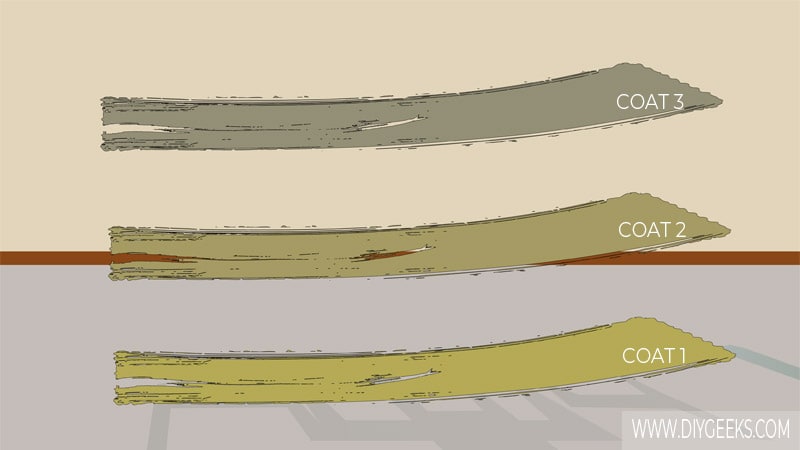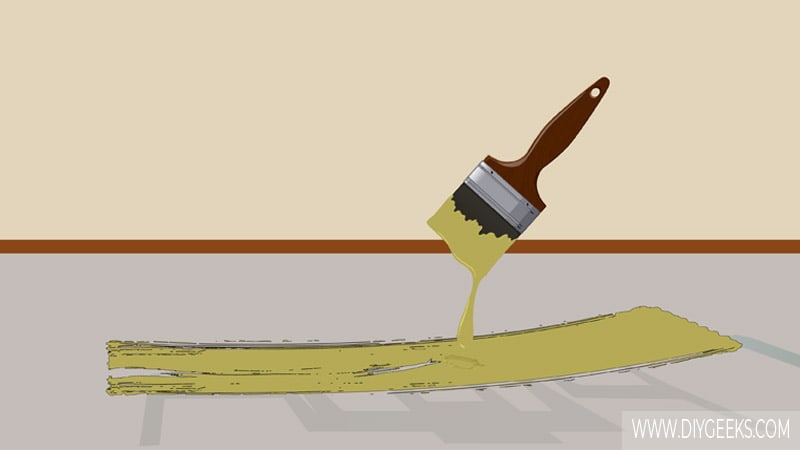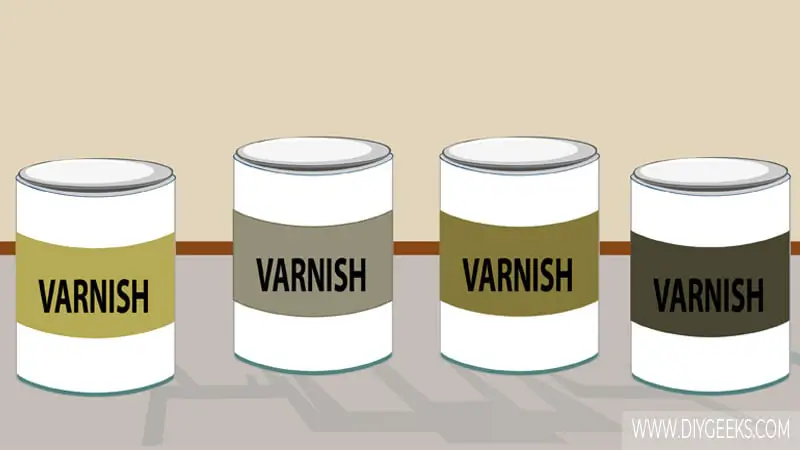You need a minimum of one (1) varnish coat and a maximum of three (3) varnish coats. For indoor low-traffic surfaces, you need 1-2 varnish coats, and for outdoor surfaces you need 2-3 varnish coats.
If you apply the right number of varnish coats, the sealer will dry over a surface or paint finish and create a transparent moisture-resistant finish that protects the surface from moisture, water, and other scratches.
If you don’t apply enough varnish coats, the finish won’t cover or protect the surface properly. If you apply too many coats, the finish will be too thick and may turn sticky.
Why Does the Number of Varnish Coats Matter?

The number of varnish coats matters as it determines the finish durability, quality, thickness, and coverage. The maximum number of varnish coats is three (3), while the minimum number of varnish coats is one (1).
If you apply the right number of varnish coats the finish will be durable and protect the surface from moisture, water, scratches, and other elements, and cover the surface properly.
if you don’t apply enough varnish coats the finish won’t be strong or durable enough to protect the surface, the finish will be thin and will dent or damage easily, and it won’t cover the surface properly.
If you apply more than the maximum varnish coats (3), the finish won’t get more durable or stronger, instead, it will become too thick, blurry, and will peel off as it can’t dry properly.
How To Know If You Need Another Varnish Coat?

To know if you need another varnish coat, inspect the finish, surface type, and varnish type.
For instance, you need another varnish coat if the first coat hasn’t covered the surface properly and looks too thin. You don’t need another varnish coat if the existing coat has covered the entire finish and produced a thick layer over it.
The surface type also determines the varnish coat number. For instance, high-traffic outdoor surfaces require more sealer coats as they are exposed to constant water or moisture and need more protection. Indoor low-traffic surfaces don’t need many sealer coats as they aren’t exposed to water or damaging elements.
The varnish type also determines the number of coats. For instance, acrylic varnish requires more coats as the finish isn’t strong enough to protect a surface with one coat only. Oil-based varnish is thicker and provides better coverage so you don’t need many coats.
The more coats you add, the thicker and more rigid the finish becomes, and the more it protects the surface underneath. However, the finish won’t become more durable if you exceed the coat number limit (3).
How Many Coats for Different Types of Varnish?

Yacht Varnish
You need two (2) yacht varnish coats for low-traffic indoor surfaces and three (3) coats for outdoor or boat surfaces.
You need 2-3 coats of yacht varnish according to Ronseal, a popular manufacturer of this sealer.
Yacht varnish is one of the most durable types of varnish as it’s designed to protect wooden parts of boats from water damage.
Spar Varnish
You need one (1) spar varnish coat for low-traffic indoor surfaces and two (2) coats for outdoor surfaces. Spar varnish is thick and has good coverage, so you don’t need many coats of it.
Optionally, you can thin it with mineral spirits before applying.
Gamvar Varnish
You need one (1) Gamvar varnish coat for low-traffic indoor surfaces and two (2) coats for outdoor surfaces.
Gamvar varnish takes too long to dry and the more coats you add, the longer you must wait. It’s advised to thin it before applying and only use a paintbrush to apply it.
Floor Varnish
You need two (2) floor varnish coats for indoor floors and three (3) coats for outdoor floors.
Spray Varnish
You need one (1) spray varnish coat for indoor low-traffic surfaces and two (2) coats for outdoor surfaces.
How Many Coats of Varnish For Different Types of Surfaces?
Wood
You need one (1) varnish coat for indoor low-traffic wooden surfaces and three (3) coats for outdoor wooden surfaces.
Indoor wooden surfaces aren’t exposed to constant water or moisture, so they don’t need much protection. While outdoor wooden surfaces are exposed to weather elements, such as rainfall, they need more protection.
Oil Painting
You need one (1) varnish coat for oil painting as they aren’t exposed to constant touching or handling.
If you apply more than 1 coat, the painting quality and color will be affected.
Boat
You need three (3) spar varnish coats for boat wooden surfaces. Wood boats are exposed to constant water and need more protection.
Outdoor Furniture
You need two (2) spray varnish coats for outdoor furniture. Outdoor furniture is exposed to weather elements and constant water and needs more protection.
Paints
You need two or three (2-3) varnish coats of paint finishes. If the paint finish is placed outdoors, you need three varnish coats. If the paint finish is placed indoors you need two varnish coats.
The paint type will also determine the sealer number of coats — oil-based paints require less protection as they have a glossy finish.
Stairs
You need two (2) varnish coats on stairs.


